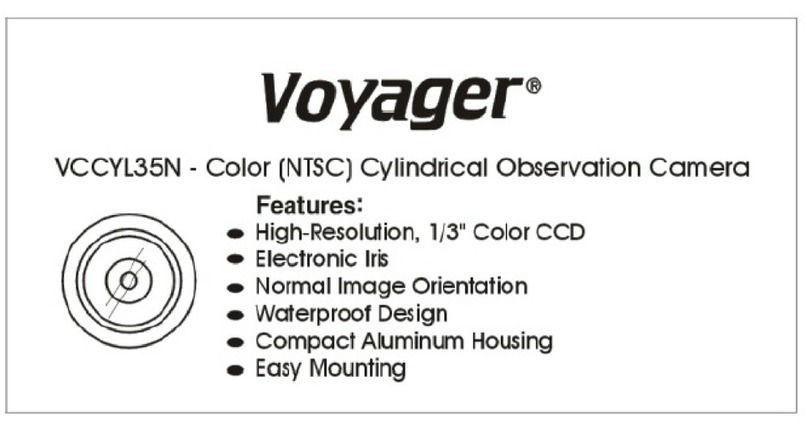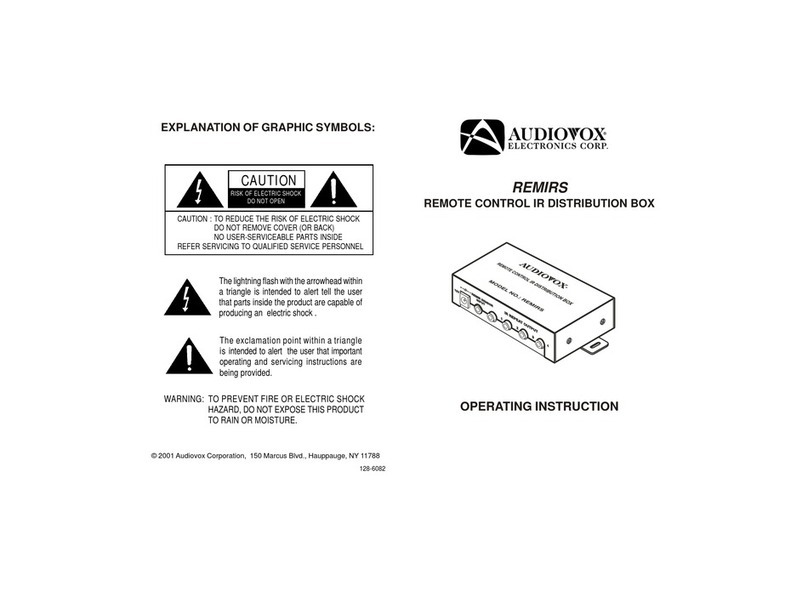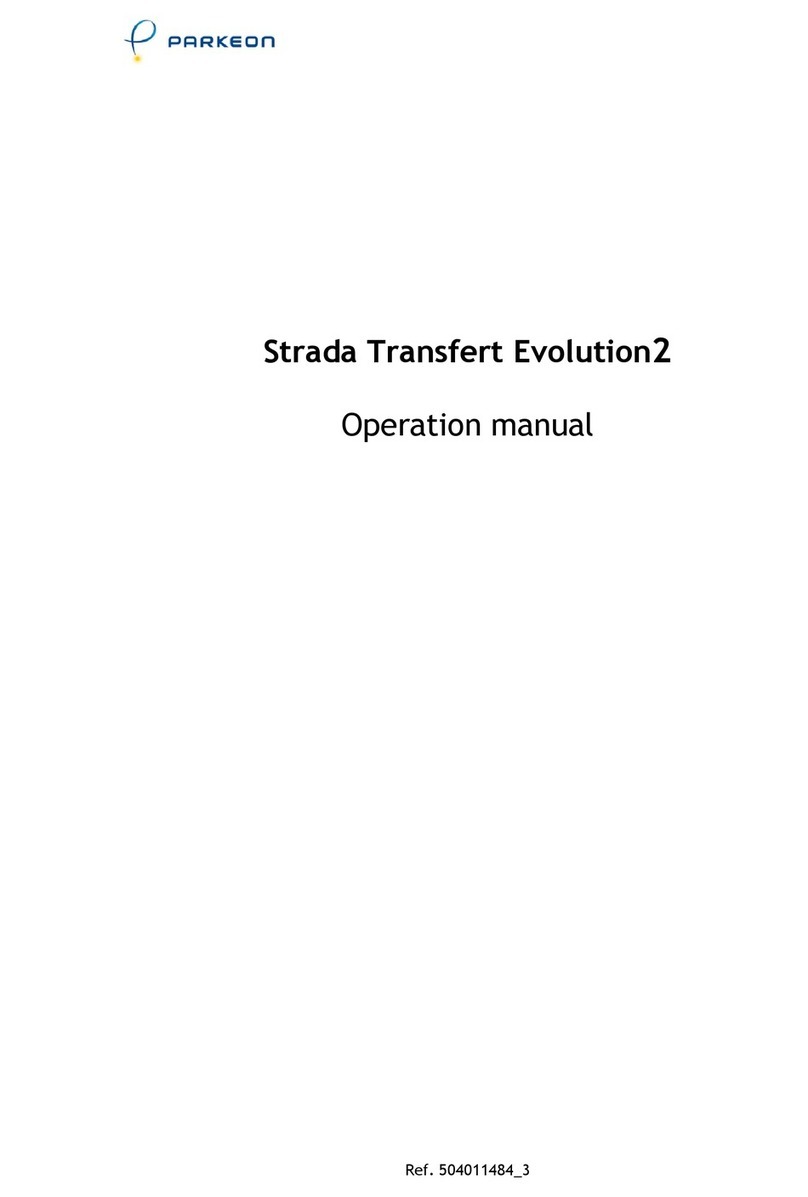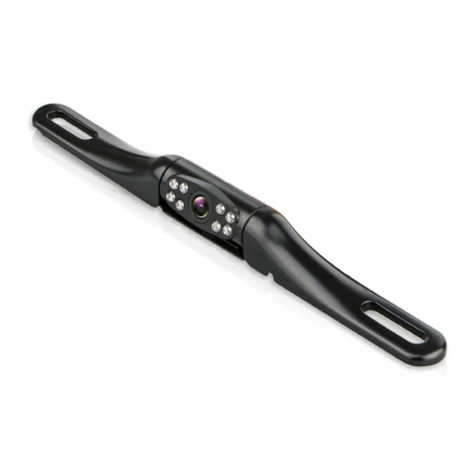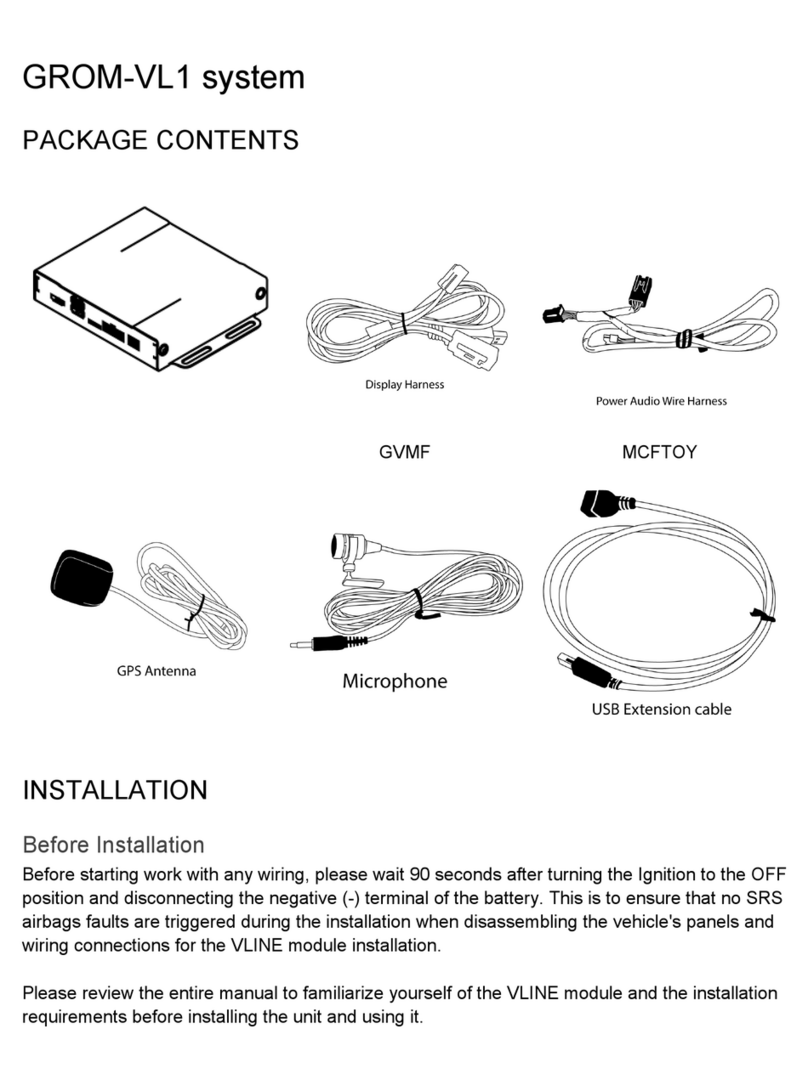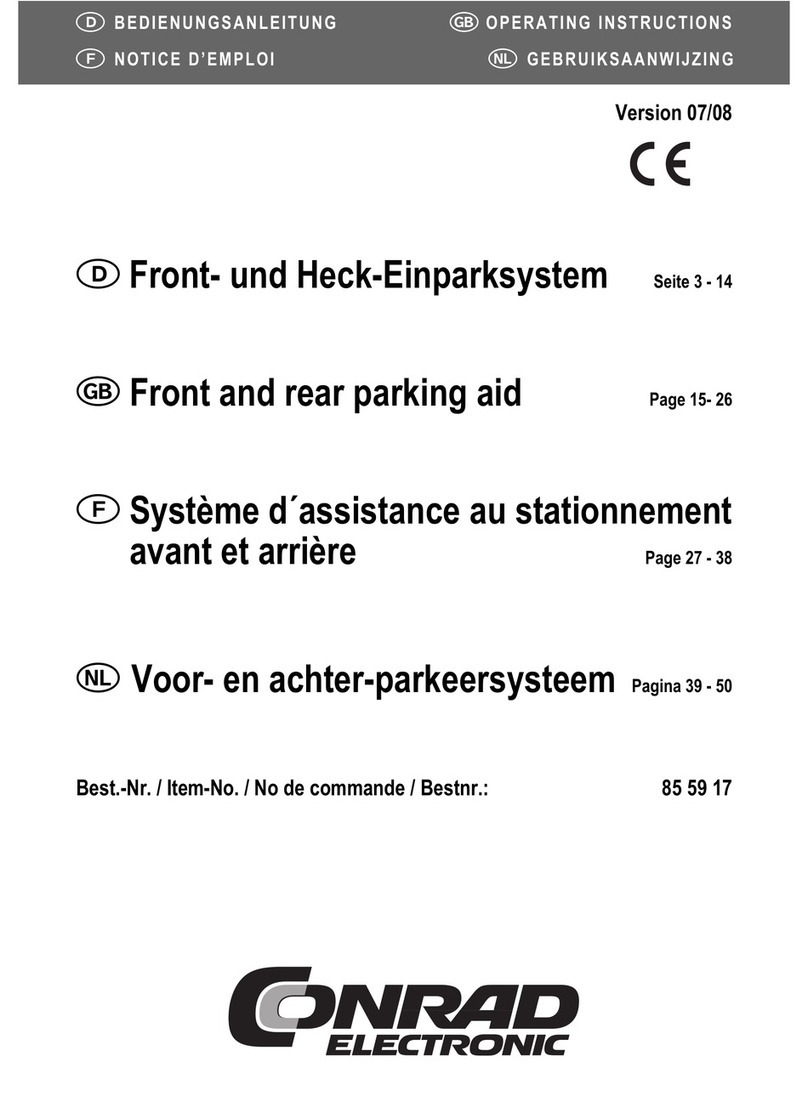Entrix XC1000 User manual

Nenn-Kapazität: 1.0 Farad
Dauer-Betriebsspannung: 12 ~ 16V DC
Maximale Betriebsspannung: 20V DC max.
Betriebstemperatur: –20 ~ + 60° C
Abmessungen (ohne Montagehalter): ø76 x 285 mm
TECHNISCHE DATEN
VERWENDUNGSMÖGLICHKEITEN
Der Pufferkondensator wird in Kraftfahrzeugen zur Stabilisierung und
Unterstützung der Stromversorgung eines Verstärkers eingesetzt, wenn dieser
schnell und für kurze Zeit hohe Ströme benötigt. Er kann kurzfristige Belastungen
der Bordspannungen bei z.B. besonders tiefen, kräftigen Bässen ausgleichen.
Durch die Verwendung des Pufferkondensators ergibt sich eine wesentlich
bessere Leistungsentfaltung des Verstärkers.
Car Audio Verstärker benötigen für den optimalen Betrieb hohe Stromstärken.
Herkömmliche Fahrzeugbatterien sind normalerweise nicht für die zusätzliche
Versorgung eines Verstärkers ausgelegt.
Ein weiterer Vorteil des Pufferkondensators ist das Filtern von Wechsel-
spannungen, die im Netzteil des Verstärkers indiziert werden. Ungefilterte
Wechselspannungen können hörbare Interferenzen verursachen.
SICHERHEITSHINWEISE
Bevor Sie mit der Installation des Kondensators beginnen, sollten Sie die
folgenden Anweisungen der Bedienungsanleitung genau befolgen!
Andernfalls besteht Verletzungsgefahr oder das Gerät könnte ernsthaft
beschädigt werden.
Der Pufferkondensator speichert sehr hohe Stromreserven und könnte bei
falscher Handhabung sogar explodieren. Wird der Kondensator zweckentfremdet,
nicht richtig angeschlossen oder nicht fachgerecht repariert, können Sach- oder
Personenschäden daraus resultieren.
Der Kondensator muss fest und fachgerecht an einer mechanisch stabilen Stelle
montiert werden.
Auf keinen Fall darf der Pufferkondensator mit einer höheren Spannung als 20
Volt betrieben werden oder ein Kurzschluss an den Strom-Anschlussklemmen
verursacht werden.
Schützen Sie den Kondensator vor Feuchtigkeit und Hitze (zulässiger
Einsatztemperaturbereich -20 °C bis +60 °C).
Für die Reinigung nur ein weiches, trockenes Tuch verwenden, auf keinen Fall
Chemikalien oder Wasser.
MONTAGE
Für bestmögliche Ergebnisse sollte der Kondensator so nahe wie möglich bei
der Endstufe installiert werden. Die Kabel zwischen dem Kondensator und der
Endstufe sollten möglichst kurz sein und einen möglichst großen Querschnitt
aufweisen. Die Kabel sind so zu verlegen, dass deren Isolierung während des
Einbaus und des Betriebes nicht beschädigt werden.
1.) Verwenden Sie die beiliegenden Halter um den Kondensator an einer
mechanisch stabilen Stelle fest anzuschrauben. Montieren Sie das Gerät
keinesfalls auf stark vibrierenden Flächen wie beispielsweise einem Gehäuse-
subwoofer.
2.) Der korrekte Anschluss ist auf der nächsten Seite dargestellt. Zur Vermeidung
von Störgeräuschen sollte der Masseanschluss des Kondensator an der gleichen
Stelle erfolgen, an der auch der Verstärker angeschlossen wird.
ERSTES AUFLADEN
Beim erstmaligen Aufladen des Kondensators sollte unbedingt der beiliegende
Lade-Widerstand benutzt werden um den Ladestrom zu begrenzen und
Anschlussfunken zu vermeiden. Verbinden Sie dabei das Massekabel „-” mit
dem „-” Anschluss des Kondensators. Dann klemmen Sie den beigelegten
Widerstand an den „+“ Anschluss des Kondensators und halten das „+“ Kabel
des Batterieanschlusses bzw. des Verteilerblocks an das andere Ende des
Widerstands.
Der Widerstand kann nach ca. drei Minuten oder wenn der Kondensator ca. 10
Volt erreicht hat entfernt werden. Schließen Sie nun das „+“ Kabel der Batterie
an den „+“ Anschluss des Kondensators an, um den Ladevorgang bis zu 12~14V
abzuschließen.
Währendes des Ladeprozesses zwischen 5 ~ 10 Volt ertönt ein Signalton!
Der Widerstand könnte während des Ladens sehr heiß werden.
Achten Sie unbedingt darauf, die Terminals nicht kurzzuschließen!
XC1000
1.0 FARAD POWERCAP
Verstärker
ANSCHLUSSBEISPIEL
Remote-Steuerleitung
vom Autoradio/Steuergerät
Sicherung
Hinweis:
Achten Sie auf korrekte Polung!
Batt.
FUNKTIONSBESCHREIBUNG
Digital Voltanzeige
Diese Anzeige zeigt die aktuelle Betriebsspannung in Volt an und ist somit eines
der wichtigsten Features zur Statusanzeige der Stromversorgung des Fahrzeuges.
Die Spannungsanzeige schaltet sich erst ein, sobald 12V am Remote-Anschluss
anliegen und eine Spannung von ca. 5 ~ 10 Volt an den Anschlüssen anliegt.
Während des Aufladens (5 ~ 10 Volt) oder wenn die anliegende Spannung
unter 10 Volt fällt, ertönt ein Signalton.
Kontroll-LED
Bei großen Spannungsschwankungen oder bei Spannungsabfall beginnt die
Kontroll-LED rot zu blinken. Überprüfen Sie dann die Bordspannung des
Fahrzeugs oder die Strom-Anschlüsse auf fehlerhafte Befestigung.
Warnton
Wenn ein Vertauschen der Pole (+und –Anschluss) vorliegt, ertönt sofort ein
Warnton.
Entfernen Sie in diesem Fall sofort die Anschlüsse. Explosionsgefahr!
Potentiometer
Dieser Regler erlaubt die Justierung der Voltanzeige.Mehr Informationen dazu
auf Seite 8.
Autoremote
Der Kondensator ist mit einer automatischen Aus- und Einschaltfunktion
ausgestattet. Solbald der Kondensator eine Spannungsschwankung bemerkt,
schaltet er sich von selbst ein und schaltet sich wieder von selbst aus, wenn
ca. zwei Minuten keine Schwankung bzw. Aktivität bemerkt wurde.
Potentiometer
Digitale Voltanzeige
Kontroll-LED
”+” Batterie-
anschluss
”–” Masse-
anschluss
JUSTIERUNG DERVOLTANZEIGE
Die Justierung der Voltanzeige ist schon ab Werk erfolgt und kann bei Bedarf
nachjustiert werden. Bei der Installation weiterer Kondensatoren können durch
Toleranzen die Anzeigewerte variieren. Dies kann mit dem Potentiometer
nachjustiert werden.
Gehen Sie dabei wie folgt vor:
1.) Messen Sie die aktuelle Betriebsspannung am “+“ und “-“ Pol des Kondensators
mithilfe eines geeigneten Multimeters.
2.) Entfernen Sie dann vorsichtig die Plexiglas-Abdeckung oben am Kondensator
und stellen den Wert am Potentiometer mit einem geeignetem Schraubendreher
auf den Wert, der zuvor gemessen wurde.
3.) Achten Sie unbedingt bei der Demontage darauf, die Anschlussklemmen
nicht kurzzuschließen.
4.) Oder beauftragen Sie Ihren Fachhändler.

APPLICATIONS
The power capacitor is used in vehicles for stabilizing the 12 Volt supply and
support for car audio amplifiers, if fast and temporary high currents are required.
The power capacitor can compensate short-term power peaks on the on-board
electrical system for low and powerful bass operations.
The use of the power capacitors results in a considerably improved power
expansion of the amplifier.
Car audio amplifiers require very high current peaks for a proper operation.
Conventional car battery are not designed to deliver additional power supply
to car audio amplfiers.
Another feature of this power capacitor is to filter car AC voltage included by
the amplifier’s power supply. This can cause audible interferences in the audio
signal.
SAFETY INSTRUCTIONS
Before you begin with the installation, please attend the following advices
in this manual. Otherwise the risk of injury or a damage of the device
consists.
The power capacitor stores an extremly large amount of electricity and may
explode or cause serious injury. If the device is used for other purposes than
originally intented or if not proper used or installed, personal injury or material
damage could occur.
The capacitor should be mounted at a mechanically stable position in the vehicle.
The device should be fixed properly and professional.
At no time the power capacitor should be exposed to voltages higher than
specified (max. 20 Volts) or its terminals shorted directly.
Protect the capacitor against humidity and heat (admissable temperature range
- 20 °C to +60 °C).
For cleaning use a dry and soft cleaning tissue, by no means any chemicals
or water.
INSTALLATION
For achieving the best results the capacitor should be located close-by the
amplifier. The cables between capacitor and amplifier should be short as possible
and should have large cross section. While installing the cables or the operation,
ensure not to damage the insulation of the cables.
1.) Tightly screw the device with the supplied brackets and screws as close as
possible to the amplifier on a machanically stable position. By no means install
the capacitor on any kind of speaker enclosure or on high vibrating positions.
2.) The correct wiring is displayed on the next page. To avoid any interferences,
connect the capacitor’s ground connection at the same ground terminal like the
amplifier.
INITIAL CHARGING PROCESS
For the first initial charging use by any means the supplied resistor, to limit the
charge current and to avoid connecting sparks. Connect the ”–” ground wire
with the ”–” terminal of the capacitor. Then connect the remote-wire of the head
unit with the remote-terminal on the capacitor.
Then clamp the supplied resistor to the ”+” terminal of the capacitor and hold
the ”+” wire of the battery or distribution block at the other end of the resistor.
The resistor can be disconnected after approx. three minutes or if the capacitor
reached a load of 10 volts. Then connect the “+” terminal of the battery with the
“+” terminal of the capacitor to complete the charging process until 12~14 volts
are achieved.
During the charging process (between 5 ~ 10 Volt) a sound blip is hearable!
The resistor may get very hot during the charging process.
Please avoid any short circuit on the terminals.
XC1000
1.0 FARAD POWERCAP
WIRING DIAGRAM
VOLTMETER ADJUSTMENT
The adjustment is already done by the factory, but can be redone if necessary.
By using additional capacitors, various indicated values could be occured. This
can be adjusted by the potentiometer.
Follow these instructions:
1.) Measure the actual operating voltage on the ”+” und ”–”pole of the capacitor
by using an appropriate multimeter.
2.) Remove the plexi-cover of the capacitor and adjust the value with the
potetiometer by using a appropriate screwdriver to the same value, you have
measured before.
3.) Ensure while removing the cover, not to short the terminals.
4.) Or assign your car audio retailer.
Rated Capacity: 1.0 Farad
Continuous Voltage: 12 ~ 16V DC
Maximum Voltage: 20V DC max.
Operation temperature: –20 ~ + 60° C
Dimensions (without Mounting Brackets): ø76 x 285 mm
SPECIFICATIONS
Amplifier
Remote-Wire
from Car Stereo/Head Unit
Fuse
Note:
Ensure correct polarity!
Batt.
FUNCTIONAL DESCRIPTIONS
Digital Voltmeter
This display indicates the actual operating voltage and is one of the most
important features to display the status of the car’s power supply.
The voltmeter is working only when a 12 Volt connection on the remote terminal
is connected and a voltage of 5 ~ 10 Volts is connected to the power terminals.
During the charging process (5 ~ 10 Volts) or if the voltage falls under 10 Volts
a sound blip is hearable.
Control-LED
If major voltage fluctations or a fall of voltage is occurred, the Control-LED starts
flashing. In this case, you need to check on-board power system or the power
terminals on faulty connections.
Audio Warning
If a interchange of the poles is occured, an audio warning is hearable.
In this case all disconnect all connections directly. Danger of Explosion!
Potentiometer
This controller allows to adjust the voltmeter.
Attend the information on Page 15.
Autoremote
The powercap is equipped with an autoremote function. If the powercap detects
any fluctation of the connected voltage, it turns automatically on. The powercap
turns off after approx. two minutes, when no fluctation or activity is detected.
Potentiometer
Digital Voltmeter
Control-LED
”+” Battery
terminal
”–” Ground
terminal
Table of contents
Languages:
Popular Automobile Electronic manuals by other brands
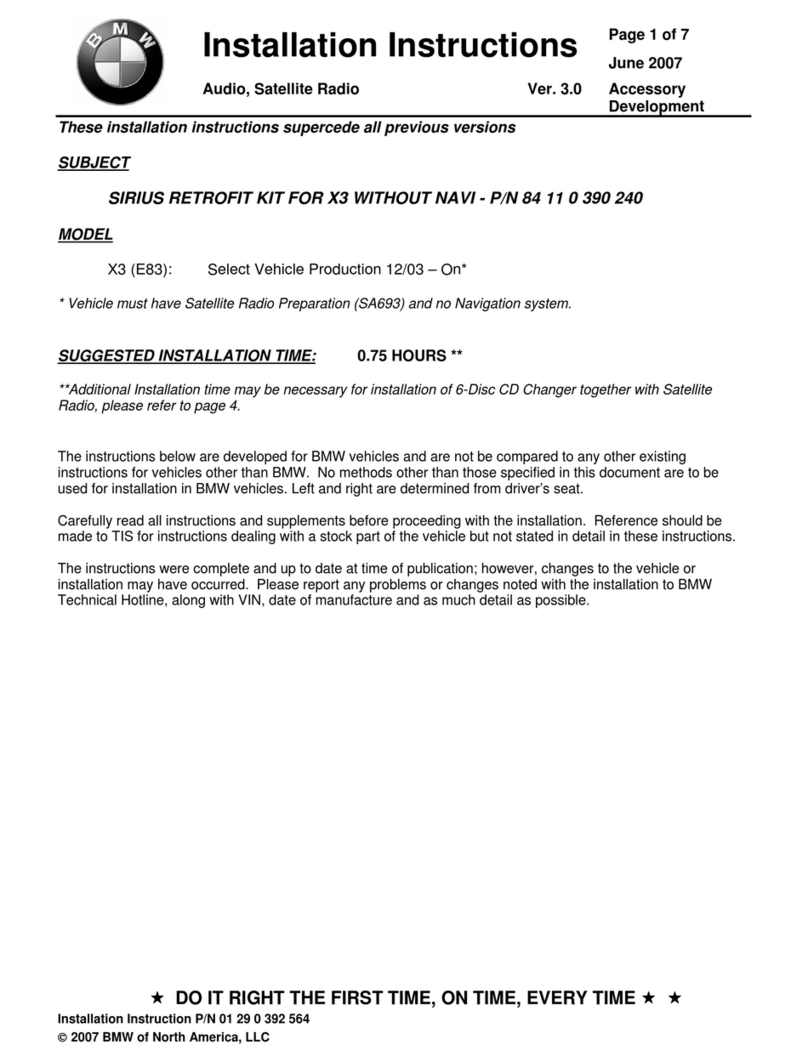
Sirius Satellite Radio
Sirius Satellite Radio RETROFIT KIT installation instructions

BMW
BMW ONBOARD COMPUTER owner's manual

Careu
Careu UX user guide

Bully Dog
Bully Dog 50 State GT Diesel owner's manual
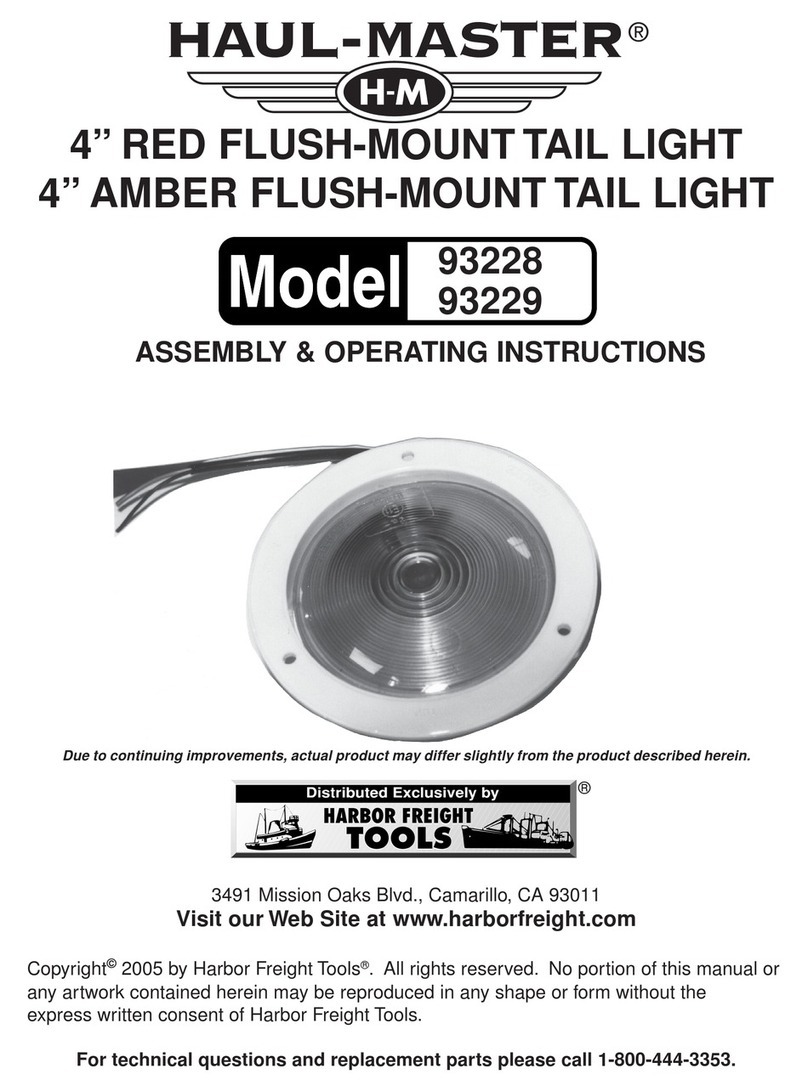
HAUL MASTER
HAUL MASTER 93228 Assembly & operating instructions

Phonocar
Phonocar 6/901 installation instructions

